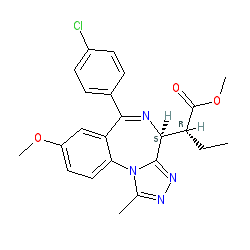GtoPdb is requesting financial support from commercial users. Please see our sustainability page for more information.
|
Compound class:
Synthetic organic
Comment: The chemical structure shown here is the (1S-2R) isomer of the compound ET, this represented the minor product of the synthesis [1], with the major component being the (1S-2S) isomer. Data from the manuscript was produced using the former isomer, simply called ET in the text.
Ligand Activity Visualisation ChartsThese are box plot that provide a unique visualisation, summarising all the activity data for a ligand taken from ChEMBL and GtoPdb across multiple targets and species. Click on a plot to see the median, interquartile range, low and high data points. A value of zero indicates that no data are available. A separate chart is created for each target, and where possible the algorithm tries to merge ChEMBL and GtoPdb targets by matching them on name and UniProt accession, for each available species. However, please note that inconsistency in naming of targets may lead to data for the same target being reported across multiple charts. ✖ |
|
|||||||||||||||||||||||||||||||||||
| Bioactivity Comments |
| Ligand ET binds to WT BRD2(1) and BRD2(2) with Kds of 9 and 17 µM respectively. In line with the experimental hypothesis, ET displayed much lower Kds against the corresponding L/A mutants [BRD2(1)L110A and BRD2(2)L383A] which represents 9120- and 200-fold stronger binding relative to WT. Actual Kds for the mutants are 74 and 86 nM [1]. respectively. |
| Selectivity at enzymes | ||||||||||||||||||||||||||||||||||
| Key to terms and symbols | Click column headers to sort | |||||||||||||||||||||||||||||||||
|
||||||||||||||||||||||||||||||||||







